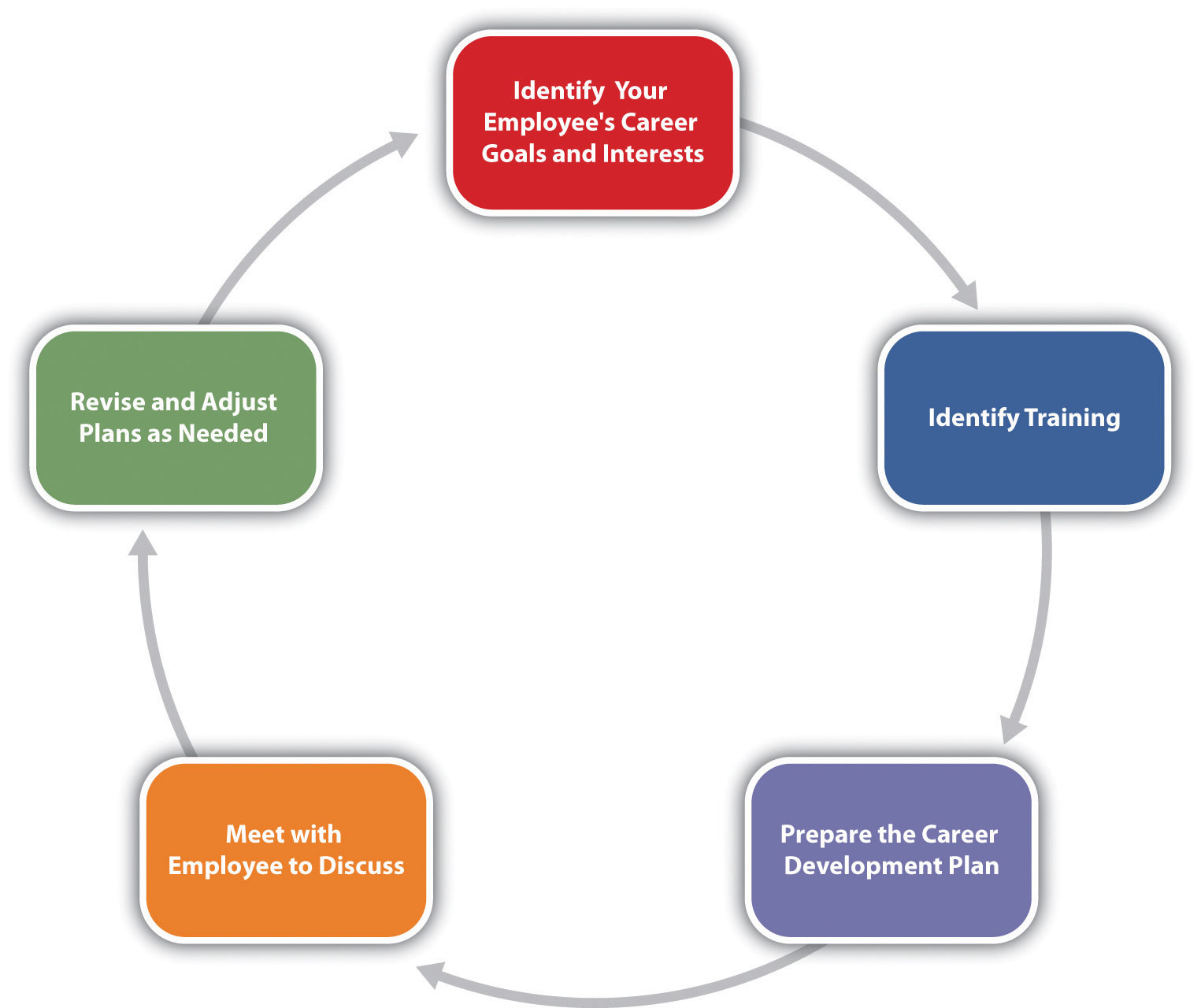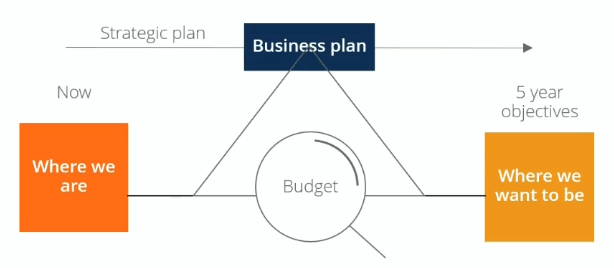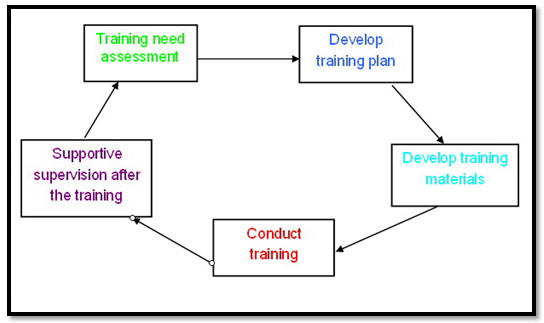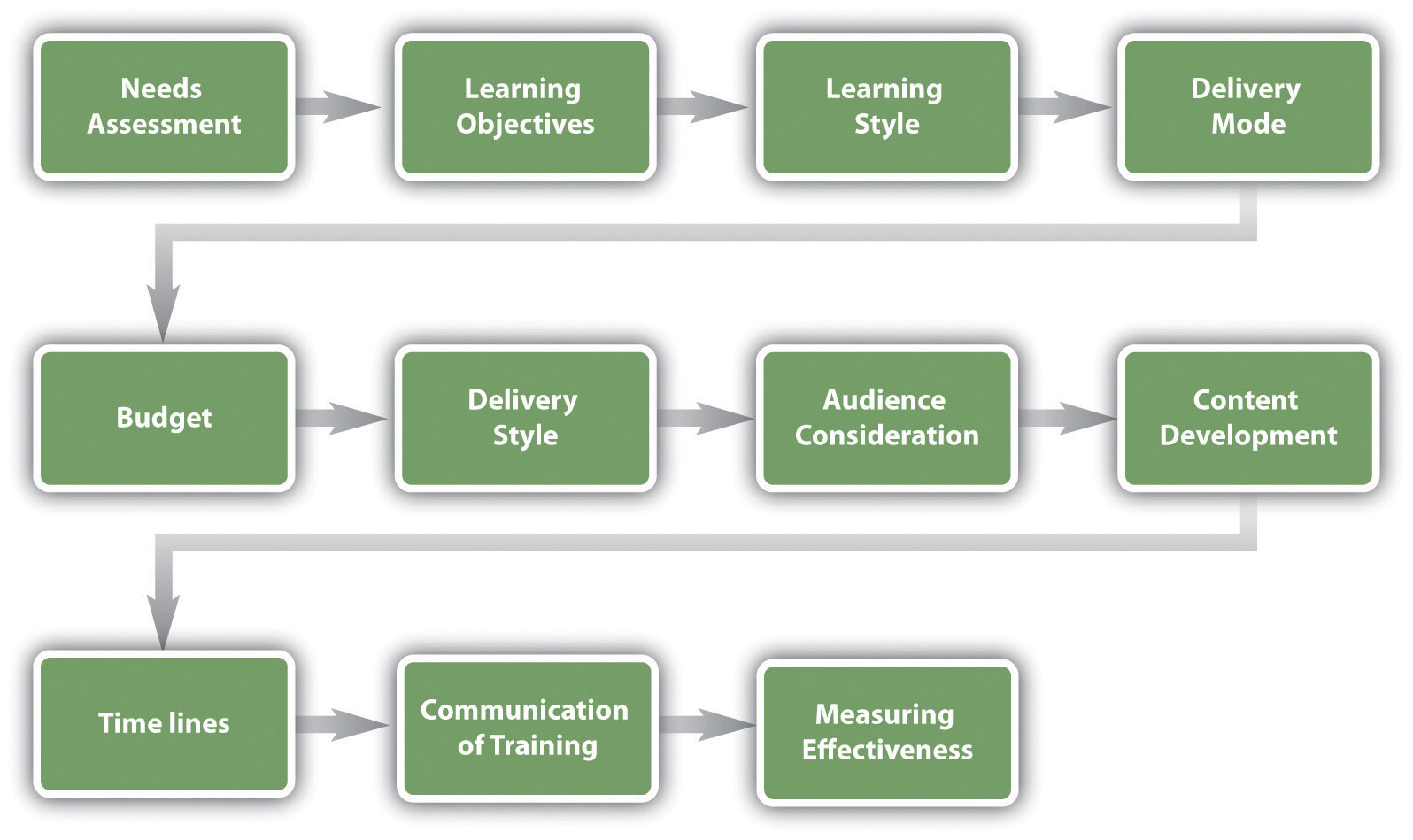Describe the Budgeting Process of Effective Training Programme
The training budget includes the. Get The Freedom To Learn And The Skills To Succeed With Alisons Free Certificate Courses.

8 4 Designing A Training Program Human Resource Management
Creating a training budget requires planning to ensure the most efficient use of limited resources.

. Involve the Team in Budget Planning. Program and Planning Program Budgeting. The budgetary process begins with sound planning.
The first step in developing a training program is to identify and assess needs. Conducting a training assessment determining objectives and figuring the costs are key components of the training budget. According to SHRM the average cost-per-hire is 412900 and average amount of days to fill that position can take up to 42 days.
We summarized it for you below. A budget is essential for any organization. The needs assessment can be studied from two perspectives.
The budget has the potential to establish benchmarks assess financial health and increase accountability and oversight. The considerations for developing a training program are as follows. The process involves a screening of all proposed activities and associated expenditures there are no assumptions.
It helps to keep track of its income and expenditure. Finally means of increasing operational efficiency in government must be sought. Planning defines goals and objectives for the leas administration and support services and develops programs to attain those goals and objectives.
Cost per unit 5-day computer-based training plus 3-day workshop 10-day training plus on-site visits Units Cost Units Cost Training program. Reusing training materials can save you ample money from making a new one. In addition calculating the return on investment will help sell senior management on the benefits of making the investment.
The basic training needs assessment is a four-step process. The budgeting process can often seem like an exercise that takes a lot of staff time without much impact. A company must devise some method to deal with the uncertainty of the future.
Training budgets typically include several common line items. It is considered a transitional form between traditional line-item and performance approaches sometimes referred to as modified program budgeting. Managing training budgets and resources effectively ensures that personnel have the skills and competencies required to complete job tasks.
Needs assessment and learning objectives. Its disadvantage is that it takes a lot more time. A well planned budget helps the school by giving control on the way it spends money.
Opt to have group training so you can get discounts from facilitators or training companies. Proper training has a positive effect on employee and customer retention sales and overall profitability. Planning preparation and evaluation.
Once these programs and plans have been. Identify a clear business goal that the training supports Determine the tasks the workers need to perform so the company can reach that goal Determine the training activities that will help the workers learn to perform the tasks. Creating a Project Budget As noted above there are many components necessary to build a budget including direct and indirect costs fixed and variable costs labor and materials travel equipment and space licenses and.
Train a specific employee and let that employee train his or her co-workers. Accordingly the budget formulation process has four major dimensions1 Setting up the fiscal targets and. Here s a template that will give you a rough idea of whats supposed to be in the briefing.
Cost-effective variants must be selected. This process involves planning and forecasting implementing monitoring and controlling and finally evaluating the performance of the budget. The budgeting process involves planning for future profitability because earning a reasonable return on resources used is a primary company objective.
Ad Free Course On The Fundamentals Of Budgeting And Variance Analysis - With Certificate. The cost of employee training programs According to a 2018 training industry report the average training cost per employee is 1096 for companies with 100-999 employees. The first step in the training process is to assess the need for training the employees.
The report also estimates that employers are offering an average of 467 hours of training per employee each year. State the course schedule and explore possible impediments. It forecasts and track how the money is being spent and saved by being intentional about each transaction.
The budgeting process is comprised of three 3 major phases. The need for training could be identified through a diagnosis of present and future challenges and through a gap between the employees actual performance and the standard performance. The scope of the analysis is determined by the.
The budget is your plan which acts as a baseline to measure your performance as you collect the actual costs once the project has been started. Assess training needs. Training is something that should be planned and developed in advance.
For instance if you spend 500000 on salaries per year and stay within the 1 to 5 percent range for training your training budget could range from 5000 to 25000 per year which is a pretty wide range. None of these can be accomplished unless financial constraints are built into the process from the very start. The budgeting process is the process of putting a budget in place.
It also makes you aware of how the money is being spent and the value derived from each of those transactions. The advantage of zero-based budgeting is that it forces the stakeholders to cast a critical eye on all activities. The average training cost per employee in 2016 comes to 1041.
Figure 86 Training Program Development Model. State the organizational context for the training and its importance. Employee training needs may already be established in the organizations strategic human resources or individual development plans.
State the objectives of the training program. This part of the framework development asks you to consider what kind of training is needed in your organization. A cost per unit of outcome can address differences in effectiveness across programs.
If you find that to be true for you its time to change your process. It is essential to retain top talent and avoid the added budgetary expense of training new employees. Look at how much you are spending on salaries to determine how much of your overall budget is available for training.
Program budgeting refers to a variety of different budgeting systems that base expenditures primarily on programs of work and secondarily on objects. You can save money that can go into needed training programs by simply keeping your top employees on the payroll. Training staff salaries Consulting or contracting instructors Tools or equipment for in-classroom instruction Technology course authoring software a Learning Management System web conferencing tools cloud-based hosting for online training Facilities Travel expenses and conferences.
According to the Training Industry Report an average training budget for a small company amounts to 234850 on an annual basis. However if youre building the training program from scratch without predetermined objectives youll need to assess which.

Systems View Of Training Stages In A Training Program

5 Steps To Creating And Implementing Effective Training Programs

No comments for "Describe the Budgeting Process of Effective Training Programme"
Post a Comment